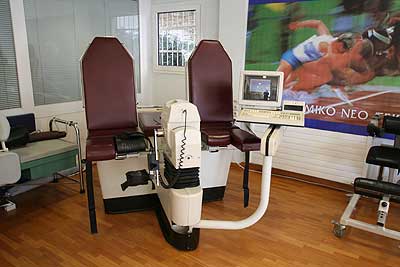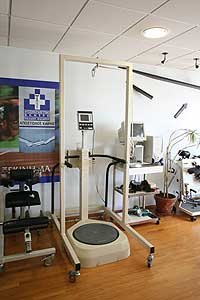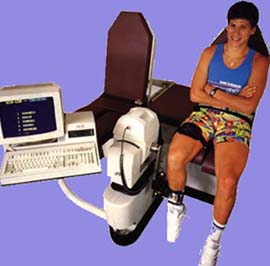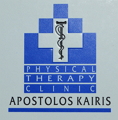

Hydrotherapy
What kind of therapy it is?
Hydrotherapy is the most modern and extremely specialized method of treatment, which with the help of under water exercises gives you the opportunity to strengthen muscles and simultaneously mobilize joints, without overloading them. This is achieved through the buoyancy force of the water, controlled temperature and resistance.
Where is it applied?
- For immediate rehabilitation in orthopaedic diseases and injuries (ligament arthroplasties)
- In neurological diseases (stroke, multiple sclerosis, paresis) in order to inhibit spasticity and ease movement.
- In pathological conditions such as intense lumbago, rheumatic diseases, shoulder periarthritis (Frozen shoulder) or where immobilization is applied.
- In cases of stiffness and deformities (for example after a fracture) to mobilize joints as painless as possible, with the use of hot water.
- For overused muscles, which relaxes and reduces the level of lactic acid with the help of ozon hydromassage.
- As part of a general program of exercises for obese people.
- For pregnant women or women who are going through the post delivery stage, in order to strengthen and tighten relaxed muscle.
How and where you do it?
Our center has a special pool with a treadmill, where hydrotherapy is done. The water is filtered and ionized on a 24-hour basis, while its temperature changes according to the medical indication.
Are there any contraindications to hydrotherapy?
There are no contra - indications, unless you suffer from a severe heart disease, a pathological skin condition or incontinence.



Ergometric System
The ergometric section of our center includes: two isokinetic dynamometers, a balance platform and a static ergometric bicycle.
What is an isokinetic dynamometer
The isokinetic dynamometer is a high-tech unit, connected to a computer which measures, evaluates and compares the functional capacity of affected joints and muscular groups in relation to protocols of natural levels or the uninvolved side. It is also used for rehabilitation and strengthening of atrophic muscles. Thus, according to the results of the evaluation, we create a program which responds to individual needs.
Where do we use this method?
- For assessing and rehabilitating the function of joints and their associated muscular groups (knee, leg, hip, shoulder, elbow, wrist, spine).
- For athletic injuries such as sprain, meniscus injuries, tendinitis, chondropathy etc, in order to achieve quick and safe return to sport activities.
- For stiffness in order to improve normal range of motion.
- After surgery, for progressive loading and mobilization of joints.
- For diseases of the lumbar and specially yhe thoracic spine (after an intense episode of back pain), by immediate and safe exercises of the abdominal and back muscles.
Why is isokinetic training preferable to weight lifting or any other kind of exercise?
The isokinetic dynamometer offers you:
- Controlled and safe training, as there is a sensory system which records the strength, the speed and the produced work in every range of motion.
- Resistance which changes during the range of motion, based on the functional capacity and muscle endurance.
- Training od the muscles at both slow and high speeds.
- Safe exercise, since the system enables the patient to interrupt the minute he/she feels pain or difficulty in movement.
- Predetermined limits of the maximum power and range of motion that can be produced.
Stability System Platform
It is a fully equipped electronic unit for the assessment of capacity in balance and movement (neuromuscular control) as well as for training of neuromuscular performance. It is used in lower limb injuries, sprains, postoperative conditions, neurological diseases and other problems of the spine. The system measures and records the deviation of the normal gravity line and the gravity center from the unstable bottom of the platform. Rehabilitation is achieved by a special computer program which is based on the condition and nature of the athlete’s injury.

Athletic Injuries
The Sports Physical Therapy Section promises fast and safe rehabilitation of the injury and the athlete’s return to his/her sports activities.
The main goal is to reduce the time of healing and to produce immediate strengthening of the muscles. Teaching athletes re-injury prevention techniques and helping them in their general physical fitness condition, are matters of great importance to us.
With the specialized support that our ergometric units provide, we assess the athlete’s physical condition and we form a suitable training program based on the measured results and the type of sport he/she practices.

